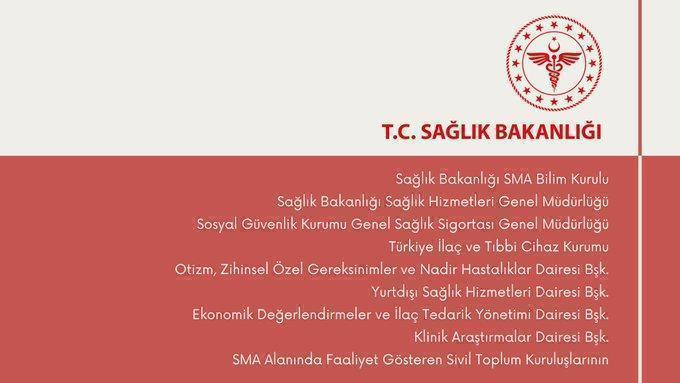- Run for Goodness
- HOMEPAGE
- WHO ARE WE?
-
WHAT ARE WE DOING?
- Support Application
- Medical Device Supports
- Medical Material Supports
- "We Are With You" Boxes
- Rental Support
- Other Supports
- Stationery Supports
- Education Scholarship
- Carrier Scan
- Newborn Screening
- Nusinersen Sodium Application Centers
- PGT
- TBMM Research Commission
- Visit / Meetings
- Our Memberships
- Seminars
- SMA Awareness Month
- I SMA Movie
- Our Publications
- Projects
- HOW CAN YOU SUPPORT?
-
SMA
SPINRAZA
Spinraza received FDA approval in 2016, in our country in 2017, type 1; In 2019, it was included in the scope of reimbursement for type 2-3 patients. Spinraz working with patients receiving ventilation therapy are omitted which are paid tracheostomy drug for patients in Turkey. have applied for a total of 1619 patients drugs in Turkey, 1574 patients were treated. The life expectancy of treated type 1 patients is over 2 years. The rate of increase in the chop intend score compared to the starting score in the first 5 doses is 84.5%.
The criterion is the continuation of ventilation need, not the presence of tracheostomy, of patients who have applied for the 10th dose who received 9 doses of treatment. Patients applying for the 10th dose; If the chop intend increases by 16 points compared to the baseline score and continues spontaneous breathing for 15 days, they can take the 10th dose.
Patients applying for the 11th dose; Treatment is continued on the condition that there is no increase in the chop intend score and no regression in respiration.
During treatment due to infection; the patient undergoing a tracheostomy; If he does not need a ventilator when the infection is over, his treatment continues. The important thing is not to have a tracheostomy; the time spent on the ventilator.
Spinraz treatment is applied at 4-month intervals in Turkey; However, the drug's duration of action continues for 6 months. Maintenance doses were administered at 6-month intervals in studies. Therefore, short delays do not pose serious problems.
ZOLGENSMA
Motor neuron loss in SMA patients irreversibly progresses very rapidly in the first 3 months. As of 6 months, 90-95% irreversible motor neuron loss is observed in type 1 patients. In SMA type 1 patients, the probability of coming to the 20th month without ventilation is 8%. The duration of the disease, the stage at which the diagnosis is made, and the starting period of treatment are very critical. For these reasons, our approaches should be based on early diagnosis and early treatment.
Infants participating in zolgensma studies weighed less than 8.4 kilograms, the data we have for patients under this weight. It was observed that these patients were alive at 20 months.
Of the 12 patients participating in the Zolgensma studies, it was observed that 2 patients with the best results were walking independently. These babies were less than 2 months old when they started treatment and their chop intend scores were higher than other patients.
Initially, patients whose chop intend score was below 40 points remained stable, and their scores did not exceed 50 points. Patients who started their treatment late could not give the desired response.
This situation gives us; It shows that the response to treatment is more favorable in cases where the time elapsed between the age of onset of symptoms and the initiation of treatment is less.
One should know the benefits and harms of the treatments and act accordingly. As the Scientific Committee, we evaluate the results in every aspect in detail, and we try to convey reliable and accurate results to our patient groups. Zolgensma data is about 4.5 years old and 12 children are being followed up. There are doubts about using Nusinersen and gene therapy together. We do not know the carcinogenic and long-term side effects and the problems patients will encounter. We do not have much data yet, we think it is worth waiting for now.
EVRYSDİ
Information was given that lumbar puncture is very difficult to perform in patients with type 2-3 and this drug can be used as it is for oral use. There is no SSI approval yet, work on Risdiplam continues.







